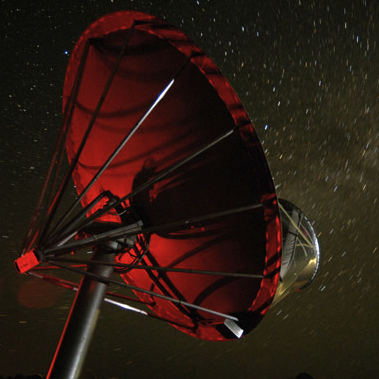The hunt for exoplanets is still going, and their number constantly growing (see here, and here). Among all the worlds orbiting other stars, scientists hope to find what could be another Earth, another planet that could harbor life as we know it. For this to be possible, a planet has to be located in the “habitable zone” of their parent star (in this zone, a planet can maintain liquid water on its surface, which is believed to be indispensable for life to appear). A team of astronomers recently showed that the habitable zone of low-mass stars might not be as habitable as previously thought.
The habitable zone, also known as Goldilocks zone, depends on the planet’s distance to its parent star. Of course, considering only this parameter is far from being enough. To be able to know if liquid water can exist on a planet’s surface, astronomers also have to determine the composition of its atmosphere.
René Heller of the Astrophysical Institute Potsdam (AIP) and his colleagues studied the tides caused by low-mass stars on their potential Earth-like companions: they have concluded that tidal effects modify the traditional concept of the habitable zone.
The scientists came to this conclusion considering three different effects. The first one describes the influence of tides on the rotation axis of a planet: after a few million years only, this axis can become perpendicular to the planet’s orbit. This would prevent seasonal variations, with huge temperature differences between the poles of the planets and their equators: the polar regions would be perpetually frozen, while the very hot equators would evaporate any atmosphere in the long run, causing extreme winds and storms.
Another effect would be similar to what is seen on Io, one of Jupiter’s moons: the exoplanet would be heated up by tides.
Finally, tides can cause the rotational period of the planet to synchronize with the orbital period: a day on such a planet would be synchronized with a year, making one side of the planet constantly facing the star, the other remaining in the dark (the phenomenon is called tidal locking; the exact same thing happens with the Earth and the Moon: the Moon is constantly showing us the same face). In this kind of configuration, one half of the planet would be constantly exposed to radiation from the star, when the other half remains completely frozen in the dark.
So far, low-mass stars have been the most promising candidates for habitable exoplanets. Taking into account tidal effects might seriously reduce the number of these candidates, making the habitable zone around such stars not that comfortable, maybe even uninhabitable.
Heller and his colleagues applied their theory to the exoplanet candidate Gliese 581 g (if confirmed, this planet would be located in the habitable zone of its star): Gl 581 g would be tidally locked, making the presence of liquid water on its surface very unlikely.
It looks like it is going to be pretty difficult to find exoplanets harboring life in the traditional habitable zone of low-mass stars, when considering tidal effects. Even though the chances for life existing on other planets are very small, this won’t stop astronomers from trying to find them.
Reference
R. Heller, J. Leconte, R. Barnes. Tidal obliquity evolution of potentially habitable planets. Astronomy & Astrophysics, 2011; 528: A27 DOI: 10.1051/0004-6361/201015809
